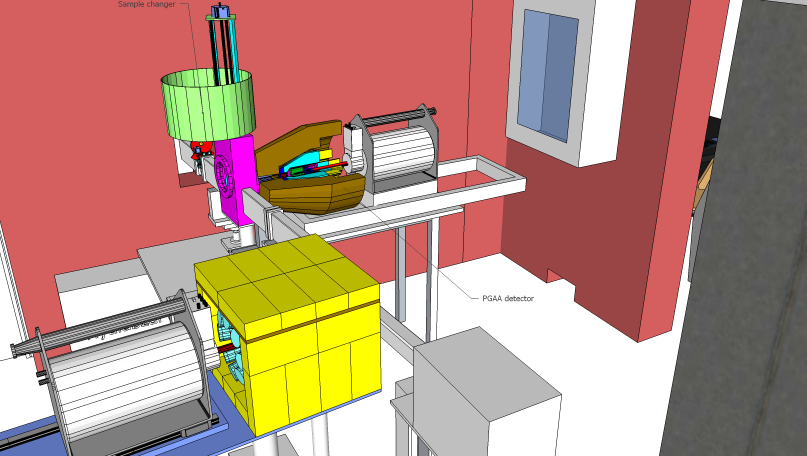Prompt-gamma activation analysis facility
Prompt-gamma activation analysis (PGAA, or PGNAA) is a nuclear analytical technique for non-destructive determination of elemental and isotopic compositions.The sample, that can be solid, powdered, liquid or even gaseous, is irradiated in a neutron beam and the gamma-rays from the radiative capture are detected. The tedious task of the sample preparation can be in most cases completely neglected. Contrary to the conventional neutron activation analysis (NAA), the irradiation and the detection is simultaneous, thus instant results can be obtained. The sample can be re-used already after a few hours of cooling.
In principle, all stable elements can be analyzed, without any prior information on the analyte. However, the detection limits of the elements differ by many orders of magnitude. Constituents with high sensitivity (e.g. B, Cd, Hg, Sm, Gd) can be quantified at our facility even at the level of 0.01 ppm, while others with small neutron capture cross-sections (e.g. Be, C, O) can be determined only as major components. For a few elements, isotope-ratio determination is also feasible. The energies and intensities of the peaks are independent of the chemical state of the material; hence the analytical result is free of matrix-effects. As both neutrons and gamma-rays are highly penetrating, the average composition of the entire illuminated volume is obtained.
The PGAA Experimental Station at the Budapest Research Reactor is in operation for a decade. Geological, archeological, environmental samples, artifacts, minerals, metals, glasses, catalysts, ceramics are routinely analyzed, as well as samples from the industry. Measurements for material science and nuclear technology are also regularly carried out.
The PGAA facility is maintained by the Department of Nuclear Research.


